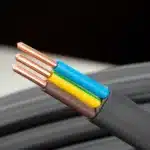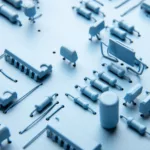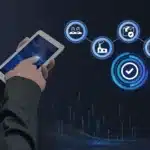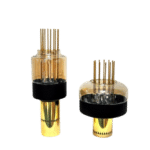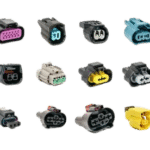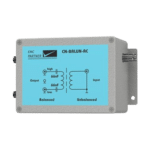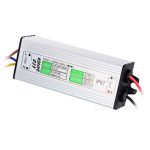
Introduction
The rapid expansion and significant influence of the Internet of Things (IoT) across various industries drive the rising demand for more advanced connectivity options. Modern IoT deployments require networks that can support vast numbers of connected devices, providing extensive coverage and increased power efficiency. LTE-M, NB-IoT, and DECT NR+ are leading the charge in next-generation IoT connectivity, offering unique benefits tailored to different IoT applications. This article discusses each technology and its integration into the DECT NR+ Development Kit to accelerate IoT deployment across various industries.
What is Meant by NextGen Connectivity?
NextGen Connectivity refers to the next generation of wireless technologies designed to address the specific requirements of IoT applications. These technologies offer improved coverage, power efficiency, and scalability compared to traditional wireless standards, making them ideal for multiple IoT deployments. NextGen IoT connectivity is a broad concept that typically encompasses several key advancements and technologies aimed at handling the growing demands and complexities of IoT networks.
What is an LTE-M? What are Its Contributions to the IoT Space?
LTE-M (Long Term Evolution for Machines) is a type of low-power wide-area network (LPWAN) technology developed specifically for IoT applications. This 4G cellular network operates within the existing LTE infrastructure, allowing easier implementation and wide coverage. The main advantages of LTE-M include lower device complexity, affordability, higher data speeds, extended battery life — thanks to its power-saving modes — and better indoor penetration compared to traditional cellular technologies.
LTE-M is ideal for mobile IoT applications such as wearable health monitors, vehicle tracking systems, and smart city solutions. Its ability to handle small to medium data throughput and voice over LTE (VoLTE) capabilities makes it highly versatile. For instance, LTE-M enables smart meters and agricultural sensors to transmit data over long distances, even in challenging environments.
Introduction to NB-IoT: Exploring Its Versatile Applications
Narrowband IoT (NB-IoT) is another LPWAN technology that focuses on indoor coverage, low cost, and high connection density. Unlike LTE-M, NB-IoT uses a narrow spectrum of just 200 kHz, which allows it to provide excellent penetration and coverage. Developed by 3GPP, the NB-IoT is particularly useful for applications in urban areas where signals must pass through multiple walls. Additionally, NB-IoT is compatible with various mobile networks (2G, 3G, and 4G) and inherits the robust security and privacy features of these networks.
NB-IoT is perfectly suited for static, low-power applications that require only sporadic data transmission. Common use cases include utility metering, smart parking systems, and environmental monitoring. Its low power requirement ensures the devices operate on a single battery charge for years, significantly reducing maintenance costs.
A Brief Overview of DECT NR+: Unveiling Its Broad-Range Applications
DECT NR+ (Digital Enhanced Cordless Telecommunications New Radio) is a relatively new entry in the IoT space. It builds upon the existing DECT standards used for cordless phone systems but is enhanced to support IoT applications. DECT NR+ wireless is designed for residential and enterprise applications, offering high-quality voice and data transmission over a secure, private network.
With its robustness in voice and broadband data handling, DECT NR+ is ideal for applications requiring high levels of data throughput and low latency. Smart home systems, industrial IoT networks, and real-time communication devices in healthcare and manufacturing sectors can benefit significantly from DECT NR+ technologies.
The Role of the DECT NR+ Dev Kit in IoT Innovation
Development kits are indispensable in the IoT ecosystem, equipping developers with the essential tools and resources needed to create and test their applications before full-scale deployment. The DECT NR+ Development Kit is a comprehensive multi-technology supporting kit that enables developers to harness the power of DECT NR+ technology for IoT solutions. It integrates multiple technologies within a single platform and includes hardware modules and software tools. Additionally, the kit offers easy integration, is scalable, and allows access to a broad spectrum of network configurations and settings.
Comparing LTE-M, NB-IoT, and DECT NR+ Technologies
LTE-M and NB-IoT are primarily designed for low-bandwidth applications; however, they differ in various aspects, including power efficiency, coverage, and cost. LTE-M and NB-IoT boast extensive coverage due to their use of existing cellular networks. DECT NR+, while more limited, offers superior indoor coverage. Furthermore, all three technologies are power-efficient, but NB-IoT and LTE-M are particularly optimised for applications where devices need to operate on a battery for years. NB-IoT generally offers lower module costs due to its simpler technology, while LTE-M devices might be slightly more expensive. On the other hand, DECT NR+ devices and kits are currently more niche and can have varying costs depending on the deployment scale.
Combining Technologies with IoT Dev Kits Offers Multiple Benefits
To harness the potential of LTE-M, NB-IoT, and DECT NR+ technologies, developers and companies can use development kits that integrate the capabilities of these technologies within a single unit. These development kits (such as DECT NR+ Dev Kits) are crucial for prototyping and testing IoT solutions, allowing developers to evaluate the performance of different technologies in varied scenarios and choose the best fit for their specific needs. These synergetic kits provide a ready-to-use platform for experimenting with multiple connectivity options, sensors, and software stacks. Additionally, these combination kits reduce development time and cost by offering a flexible and scalable environment to build and test applications before full-scale deployment.
Real-World IoT Applications of LTE-M, NB-IoT, and DECT NR+ Technologies
These NextGen connectivity technologies enable a multitude of IoT applications across various industries, including:
- Smart Cities – LTE-M and NB-IoT facilitate the deployment of smart city solutions such as smart lighting, traffic management, and environmental monitoring.
- Industrial IoT (IIoT) – DECT NR+ and LTE-M are ideal for IIoT applications, including asset tracking, predictive maintenance, and remote monitoring of industrial equipment.
- Healthcare – NB-IoT enables remote patient monitoring and healthcare IoT applications, improving patient care and operational efficiency in healthcare facilities.
- Agriculture – LTE-M and NB-IoT support precision agriculture solutions, including soil moisture monitoring, crop management, and livestock tracking.
Final Thoughts
The development of LTE-M, NB-IoT, and DECT NR+ represents a breakthrough in the quest for more efficient, robust, and flexible IoT networks. Amid the swift expansion of IoT devices and applications, these technologies are set to become the backbone of next-generation connectivity. Whether tracking fleet vehicles, monitoring urban infrastructure, or ensuring seamless operation in smart homes, Next-Generation IoT connectivity technologies are equipped to meet the challenges of today and tomorrow.






